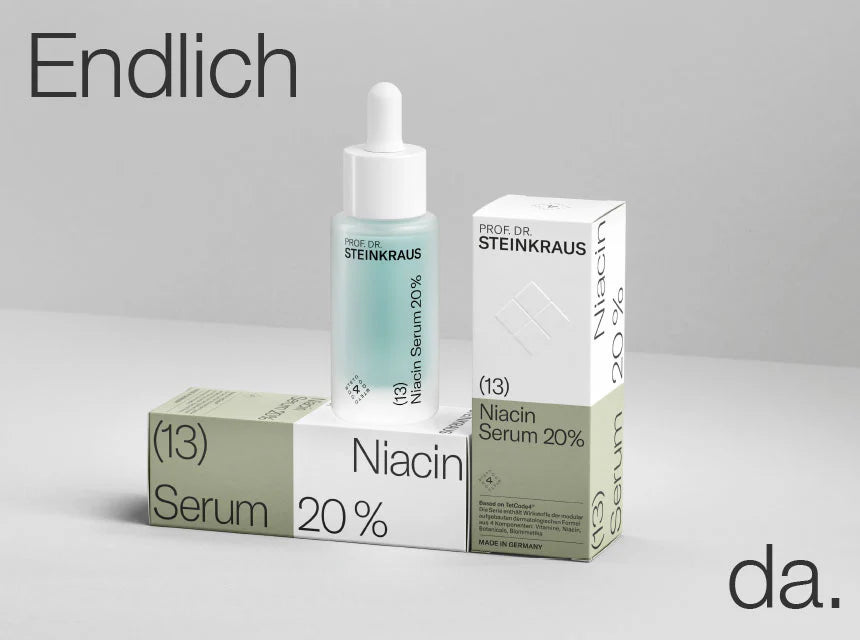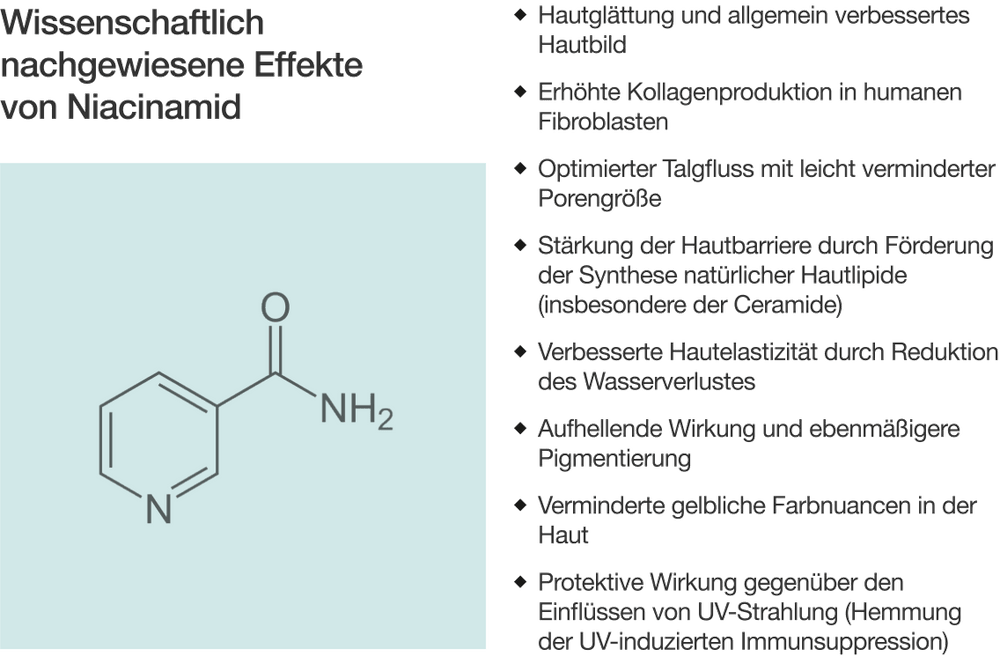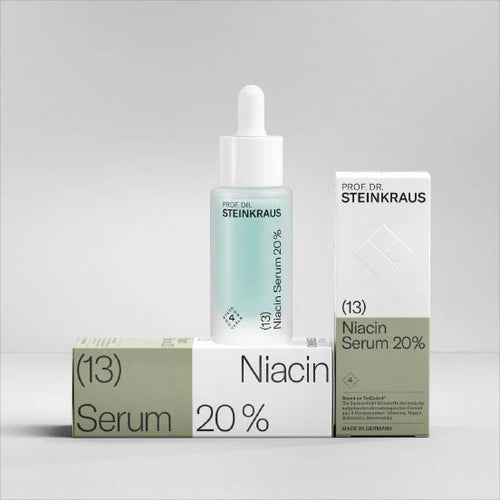

Niacinamide has been proven in recent years through numerous scientific studies to be an excellent active ingredient with a broad profile for the skin
Niacinamide
It is a building block of the coenzymes NAD+ and NADH, which is crucial for many metabolic processes, particularly energy metabolism, immunological monitoring, DNA repair, and, last but not least, skin condition. Niacinamide is therefore highly relevant for maintaining the health of all organs. Interestingly, the positive effects of niacinamide can be observed both when taken internally and when applied topically.
In 2015, a major study from Australia (Chen AC et al., N Engl J Med) involving 386 patients showed that twice-daily administration of 500 mg of niacinamide significantly reduced the incidence of non-melanoma skin cancer in high-risk patients. Niacinamide also appears to have a positive effect on the course of numerous inflammatory skin lesions.
In aesthetic dermatology, niacinamide is also increasingly gaining attention for healthy skin, as the active ingredient has now been convincing in many studies, all of which reported impressive improvements in the structure and function of the skin after prolonged application.
Origin and local application of niacinamide
Our bodies can absorb niacin (formerly known as vitamin B3) or niacinamide through food (e.g., legumes, nuts, mushrooms, fish, meat) or produce it themselves, provided the amino acid tryptophan is supplied with food. This intake is always ensured with a balanced diet. Niacin is therefore not a true vitamin, but for historical reasons is often referred to as vitamin B3. Niacin and niacinamide can be converted into one another in our bodies. Because niacinamide is more easily tolerated than niacin and is also very stable in its processed form, niacinamide is usually used for topical application to the skin.

Use in high concentration
Because niacinamide is very well tolerated by the skin, it can be applied topically in high concentrations (up to 20%). The (13) Niacin Serum 20% from Prof. Dr. Steinkraus's TetCode4 series also contains a small amount of hyaluronic acid (0.3%), which gives the product noticeably nourishing properties and ensures a particularly pleasant application. The serum's slightly bluish hue is derived from connective tissue-strengthening copper ions.

The Niacin Serum 20% is a standalone product. This means it can be used on its own or integrated into any skincare routine. The serum can be easily applied after cleansing your face before applying your skincare routine, or it can be incorporated between any other skincare steps. Allow 2–3 minutes for the serum to be absorbed before applying your facial moisturizer (e.g., Face Care Light, Medium, or Rich).
In the TetCode4 routine, the evening hyaluronic serum could be replaced with the niacin serum.
Conclusion: Along with vitamins A and C and hyaluronic acid, niacinamide is now considered another cornerstone of evidence-based and professional skin care. Niacinamide is an effective active ingredient whose regular use leads to improved skin structure and function.